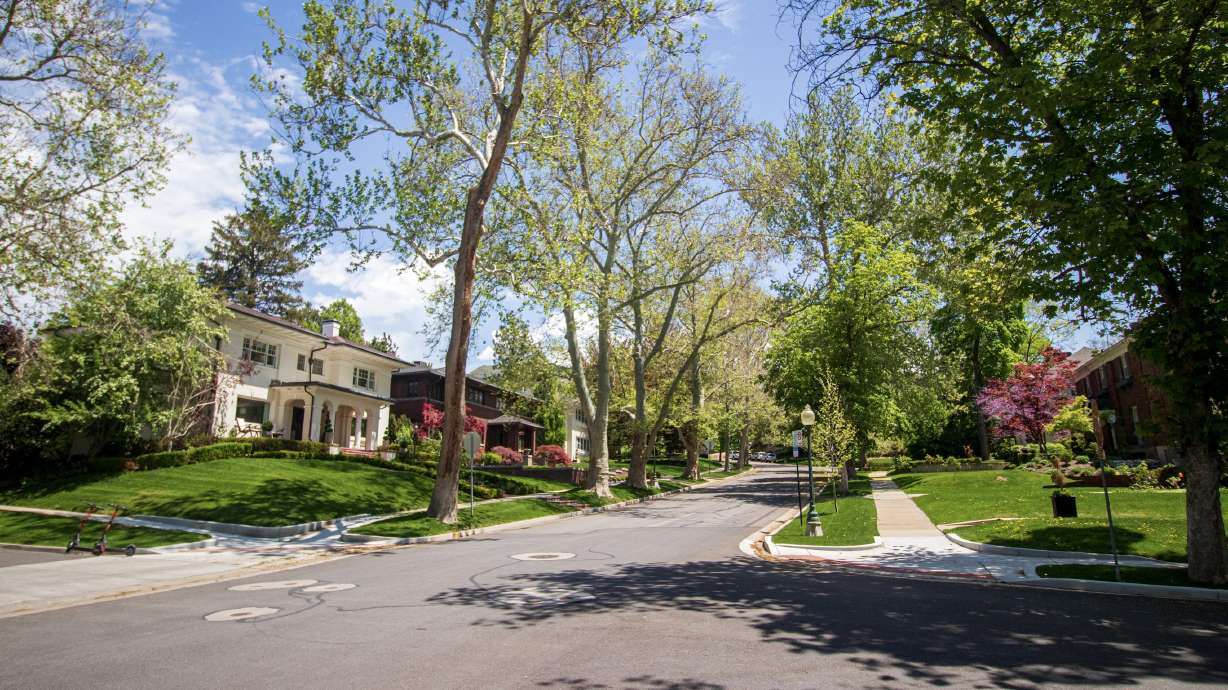Estimated read time: 4-5 minutes
This archived news story is available only for your personal, non-commercial use. Information in the story may be outdated or superseded by additional information. Reading or replaying the story in its archived form does not constitute a republication of the story.
Editor's note: This article is a part of a series reviewing Utah and U.S. history for KSL.com's Historic section.
SALT LAKE CITY — Federal Heights is a unique example of how Salt Lake City has changed throughout time.
What was once an industrial zone northeast of downtown Salt Lake City is now a quiet residential area, where towering trees shade the revivalist, Tudor and several other architectural styles that make the neighborhood so quaint.
But Liz Joerger, operations director at Preservation Utah, says the area doesn't have the same types of historic protections as its next-door neighborhood, the Avenues, which is posing a threat to decades-old homes in this part of the city.
"It's had a lot of recent teardowns," she said. "It has some fabulous, very well-maintained architecture — lots of different types of styles of architecture."
That's a big reason why Preservation Utah is highlighting the Federal Heights neighborhood for its 52nd annual Historic Homes Tour this Saturday, an event where people can participate in guided and self-guided tours of seven to nine homes in the area.
The history of 'The Heights'
Federal Heights is an interesting neighborhood for a few reasons, said Bim Oliver, a historian and architect, who gave a presentation on the neighborhood for Preservation Utah earlier this year.
First, the neighborhood zone was once home to a few slaughterhouses, brickyards and kilns, especially in the late 19th century. The ruins of those kilns can still be found just above the neighborhood to this day.
While there were some people who lived in the area, most notably Charles Popper, it started to become a residential area in 1906 when LeGrand Young, a judge at the time, sold about 40 acres to developers, who sought to build more homes east of the city's grid system.
Oliver explained that this led to a "significantly contentious" battle between the University of Utah and the developers, which ended in a lawsuit that was eventually dismissed. When the dust settled from the legal drama, the neighborhood began to take shape in the area that is now 100 South to 2nd Avenue and from Virginia Street to North Campus Drive.

The developers placed restrictions that essentially only made it possible for single-family homes to be constructed. They also had marketed the area well during the legal dispute, touting the area for its incredible view of the Salt Lake Valley and the Great Salt Lake.
Oliver even dug up an old advertisement that noted the "pure" air in Federal Heights, which was away from the smog-filled valley below. Yet it took a few years for the area to grow.

"The Lower Heights didn't develop very quickly," he said. "The true development of this area didn't occur until probably somewhere in the 1910s, and, at that point, it really accelerated in through the 1950s."
The second interesting component is that two dimensions of the neighborhood merged into one over time. The second section is located north of 2nd Avenue and is also tucked between the Avenues and the University of Utah, inching closer toward the city's green foothills.
Formally known as Popperton, the land eventually switched ownership to Bonneville on the Hill, growing largely between 1926 and the 1950s. Oliver believes the two sides eventually became one Federal Heights in 1948 during a zoning dispute related to fraternity houses in the area.
"The residents of several neighborhoods within what we now know as the Heights — Federal Heights itself, Bonneville on the Hill, Popperton Place and Virginia Place, which is also in that area, petitioned the city to zone their neighborhoods together, collectively, as a 'Double A' zone, meaning it's single-family residential," he said. "That was to keep out the enemy and the enemy was the fraternities."
The city approved the petition at the time, combining the four areas into one neighborhood entity.
Eventually, in 1972, a company acquired 63 acres in the zone and above it, leading to even more homes at the top of where Federal Heights is today, or Federal Heights Crest.
Take a tour of the neighborhood
Preservation Utah has led tours of historic homes in Utah for a few decades but it hasn't featured Federal Heights for a little over a decade now, which is another reason the organization is featuring it again Saturday. Last year's tour, which featured homes in Central City, ultimately drew in about 600 to 700 people.
This year's tour will feature seven homes like last year, Joerger said. The tour costs $25 for members, $30 online in advance (through 6 p.m. Friday) and $40 for nonmembers for the day of the event. However, Preservation Utah is offering a tour of two additional homes as a part of a new $100 "donor ticket."
People can pick up their tickets — or purchase them — at the organization's designated tour headquarters, which is located 39 S. Wolcott Street. Tickets can be picked up from 10 a.m. to 3 p.m. on Saturday, though the tour continues to 4 p.m.










